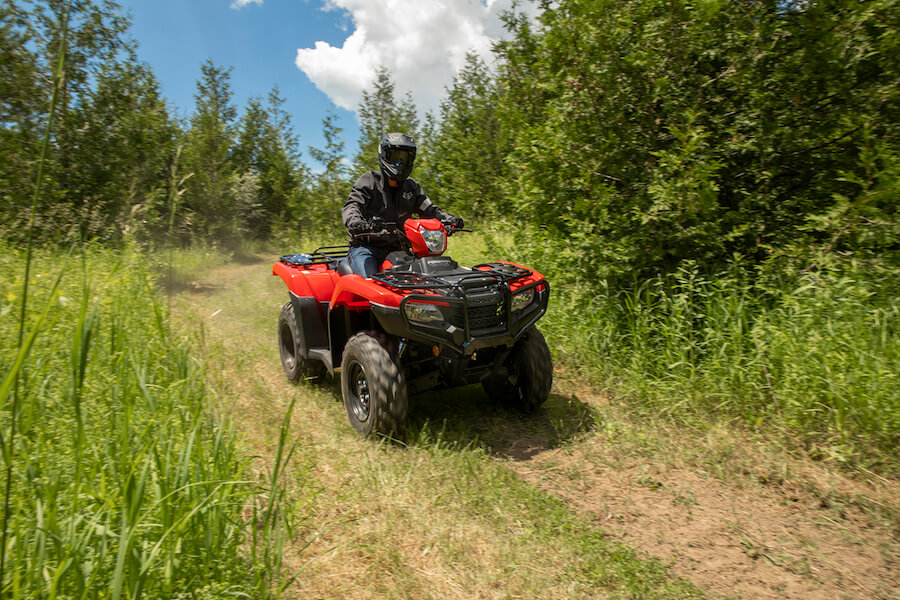
Summer is here, and it’s time to hit the trails with your quad. Unfortunately, overheating is a common problem that summer riders face. Fortunately, there are precautions you can take, as well as solutions you can perform, to stop overheating from leaving long-term damage to your vehicle.
Read below for the answers to some of the most common questions surrounding ATV overheating.
READ MORE: A Guide to Using Your UTV For Recreational Purposes
How to Tell If Your ATV is Overheating
You’ve been tearing up the terrain with your ATV in the sun, and your ATV feels hot. But is this the cause of your surroundings, or is your ATV’s engine actually overheating?
There are plenty of signs you should look for, including the following:
-
Your vehicle loses power
-
Fluid is dripping from your vehicle
-
Your vehicle’s case is particularly hot
-
The engine is making a ticking noise, indicating oil burning off
-
A strange smell is coming from the coolant
-
Steam is visible
-
The piston is expanding
If you see any of these signs, you should be cautious, as continued use upon overheating is dangerous.
What Kind of Damage Can Overheating Cause?
In terms of your vehicle’s well-being, overheating may cause it to stop functioning correctly at the moment – and it may leave long-term or even permanent damage to your vehicle.
The coolant needs a break in order to work effectively and keep your vehicle cool. The engine also might lose its lubricant upon being overheated.
It is also unsafe to ride a vehicle that is overheating.
Why Does Overheating Happen?
Simply put, overuse is the most common reason for overheating. However, overheating might indicate a few other problems that you should check out for your vehicle’s well-being.
First, the radiator might be dirty or clogged with debris. For it to function properly, it needs to be able to let air out – but as dirt finds its way into the radiator, it might overheat as a result.
Second, the thermostat valve in the cooling system may be broken or shut closed. If this is the case, the device won’t be able to cool the engine when it needs to happen.
Next, the cooling system itself could be the problem. It’s possible that the cooling system may be leaking, leaving it without enough coolant to function correctly. Otherwise, it may need to be replaced, or it may have trapped air.
Among other indicators are: a broken head gasket, a broken radiator, or poor engine tuning.
READ MORE: Questions to Ask Yourself When Buying a New Dirt Bike
How to Stop Overheating
What can you do if you’re on the trail when you notice an overheating problem? Don’t worry – there are plenty of strategies you can implement to keep your four-wheeler riding at the right temperature.
First, remember that prevention is key. Whenever possible, keep your radiator and its screen clean. Also, make sure to check often whether your coolant needs to be refreshed or not. You can refer to your vehicle’s manual, or the manufacturer’s recommendations, to know how often you should change the fluid, though usually, it is every few years.
There are some upgrades you can get to protect your vehicle against overheating. Electrical radiator fans are one popular option.
CHECKLIST: What If My Vehicle Won’t Start At All?
It’s possible that your vehicle is so overheated that the engine simply won’t budge. There are plenty of reasons why this might happen, with an overheated engine being one of them. Otherwise, run down this list of potential problems to ensure that your ATV is ready for the trail:
-
Make sure the battery is charged and installed correctly
-
Ensure that the spark plug is working and installed correctly
-
Check to see if you have enough fuel, or that fuel is leaking
-
Clean the air filter to ensure the ATV is getting enough airflow
-
Make sure the engine’s individual parts are working; this may include the head gasket, cylinder walls, or piston ring
-
Make sure the fuel in the vehicle isn’t too old
READ MORE: The Ultimate Off-Road Checklist
Summer ATV storage tips
If your vehicle isn’t stored properly during the summer, its ability to keep cool might wear off. Keeping it in a cool, dry place (like a shed or a garage) is the best way to store it – even in the summer.
Since that’s not always an option, take caution if you store your ATV outside. We recommend using a heavy-duty ATV cover and chain it to something for safety’s sake. Using a battery tender will protect your battery’s lifespan. When storing your vehicle outside, regularly check its fuel levels and its tires.
Conclusion
Dealing with an ATV that’s too hot is a frustrating experience for any rider. That’s why prevention is key – and we hope the tips above help you solve any temperature-related calamity you experience.